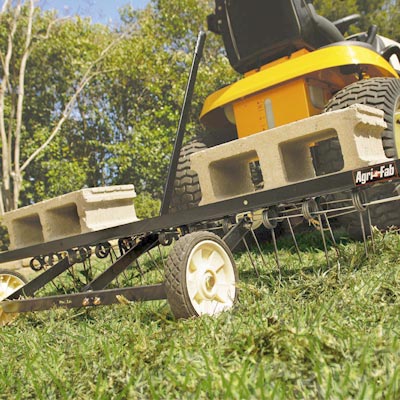Fixing Thatch Build-up
Maintenance
Like everything in life, it’s important to keep the thatch levels in your balanced.
Lawn Thatch is the build-up of grass blades, stolons and rhizomes. It’s the natural process of breaking down this organic matter and can has great benefits for your lawn. The main advantage is that the thatch layer protects the soil from the sun and provides nutrients to your grass.

To know if your lawn has too much thatch, keep an eye out for yellow patches after mowing and for a spongey feeling when you walk on your lawn.
Thatch issues are typically caused by uneven watering, not enough mowing or general neglect.
You can:
Mow low. By mowing low a couple of times, the thatch level will slowly decrease. However, if it isn’t growing season, this could scalp your lawn, leading to bigger problems.
Use a specialised dethatching machine. Perfect for larger lawns or particularly thick thatch build-up, this will get the job done quicker.
Try a dethatching rake. This is the least invasive option but isn’t as effective if your build-up is extreme.

After dethatching, your lawn will be quite weak. Rake any loose debris away and fertilise (if you haven’t already) to help it recover.
Recommended for you...
Poolside Turf: Choosing and Maintaining Grass Around Pools
There’s nothing quite like stepping out of a swimming pool onto soft, lush grass. But when it comes to finding the best grass for around a pool, not all lawns are created equal. Chlorine pools, heavy foot traffic, and the unforgiving Australian sun can take a toll on...
The Best Parks & Playground Turf for Kids, Pets & Families Across NSW
Creating safe, welcoming, and enjoyable community spaces starts from the ground up. Whether it’s a local dog park, an outdoor playground turf project, or a family BBQ area, choosing high-quality natural grass makes all the difference. Natural grass doesn’t just look...
Keeping Your Lawn Green and Healthy During the Summer Heat
Discover the best grass options for your lawn with our complete guide. Make informed choices for a lush, healthy yard. Read more to find your ideal grass!



